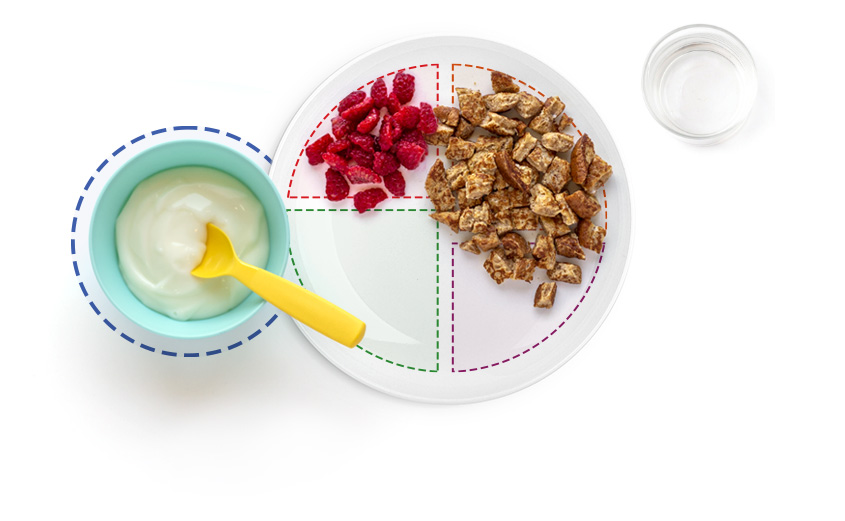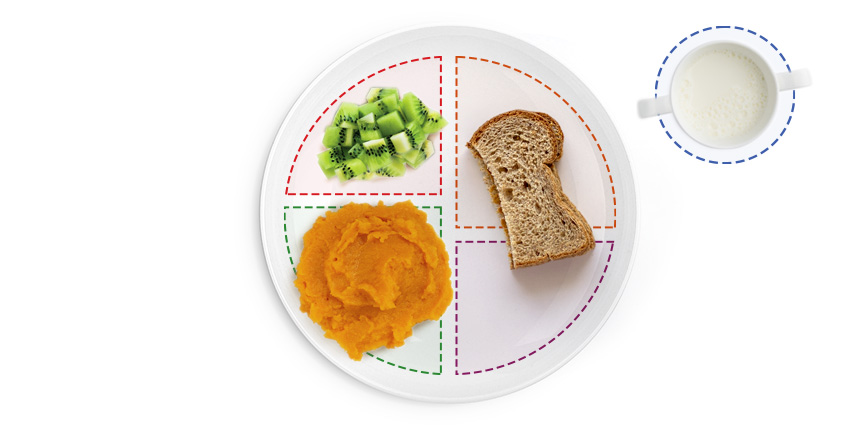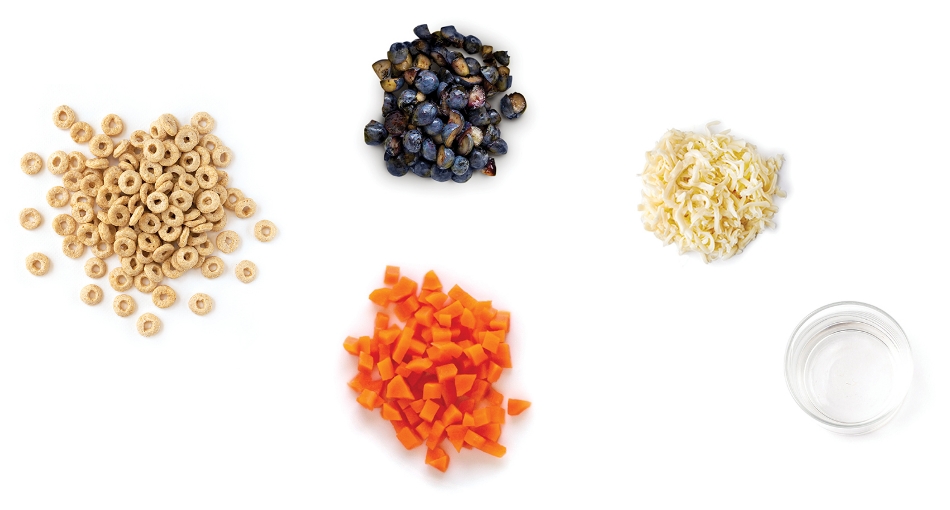Mwen santi m fyè lè m kapab chwazi.
Mwen bezwen èd ou pou m aprann chwazi.
Kisa
- Mwen kapab manje sa tout lòt moun manje. Ou pa oblije fè yon manje espesyal pou mwen.
- Kite m chwazi sa m ap manje nan manje ou ban mwen an.
Kijan
- Ban mwen chwazi lè sa posib. Mande m si mwen vle pwa frans oswa kawòt oswa si m ta renmen manje tranch pòm wouj oswa tranch pòm vèt.
- Ban mwen tout kalite manje, menm sa ou pa renmen yo. Kite m goute yo pou m konnen si m renmen yo.
- Si mwen pa renmen yon nouvo manje tousuit, se pa yon pwoblèm! Ban mwen li ankò yon lòt fwa. Sa ka rive se apre plis pase 10 fwa mwen deside goute l.
Kilè
- Woutin mwen enpòtan. An n eseye manje chak jou nan menm lè a.
- Si mwen pa vle manje yon nan yon repa oswa ti goute, di mwen m ap gen yon lòt okazyon pou m manje nan pwochen repa oswa ti goute a.
- Pa bliye, mwen senpman bezwen dlo ant repa yo ak ti goute yo.
Ki kote
- Mwen aprann lè m ap gade ou. Chita pou manje menm manje ou ban mwen an.
- Fè m konnen mwen fè pati fanmi an. Mwen kapab bay kout men nan siye tab la ak koupe leti oswa legim vèt pou fè salad.
Men kèk egzanp ki montre aparans pòsyon repa ak ti goute a ka genyen nan asyèt ou.
Manje maten
Yon ka (¼) tas franbwaz ki koupe an kib
demi (½) tas yogout ki gen tikal grès

Demi (½) tranch pen konplè griye dore ki koupe
demi (½) tas dlo
Manje midi
Yon ka (¼) tas kiwi ki koupe an kib
demi (½) tas patat ki kuit epi kraze

Yon (1) tranch pen konplè ki bere
avèk yon 1 gwo kiyè manba
demi (½) tas lèt ki gen tikal grès
Ti goute

Demi (½) tas sereyal sèch
demi (½) tas kawòt ki kuit epi rache
demi (½) tas mitiy ki rache
demi (½) tas fwomaj rape
dlo ant repa ak ti goute yo
Manje aswè
Demi (½) tas pwa vèt ki kuit epi rache
demi (½) tas lèt ki gen tikal grès

Demi (½) tas tomat ki kuit epi ki koupe an
kib avèk demi (½) tas pat alimantè konplè ki kuit
avèk 2 gwo kiyè vyann poul ki kuit nan fou epi ki rache
Kantite yo Sijere Chak Jou pou Gwoup Manje yo
2 pòsyon pa jou
1 pòsyon = demi (½) tas
(1 tas antou)
Fwi ki kuit oswa ki mou epi ki kri.
Kraze, tranche, oswa rache.
Ofri m tout kalite koulè: wouj, jòn, jòn abriko, ble, ak vèt.
2 pòsyon pa jou
1 pòsyon = demi (½) tas
(1 tas antou)
Legim ki kri oswa ki kuit, kraze, tranche, oswa rache.
Ofri m tout kalite koulè: vèt fonse, jòn abriko, wouj, jòn, ak mòv.
6 pòsyon pa jou
1 pòsyon = demi (½) ons
(3 ons antou)
Pen konplè, tòtiya, diri, oswa makawoni.
Sereyal sèch oswa kuit.
6 pòsyon pa jou
1 pòsyon = demi (½) ons
(3 ons antou)
Pen konplè, tòtiya, diri, oswa makawoni.
Sereyal sèch oswa kuit.
2 pòsyon pa jou
1 pòsyon = 1 ons
(2 ons antou)
Vyann, vyann bèt volay oswa pwason ki kuit epi rache.
Ze.
Pwa, pwa frans, oswa tofou ki kuit.
Manba.
2 pòsyon pa jou
1 pòsyon = 1 ons
(2 ons antou)
Vyann, vyann bèt volay oswa pwason ki kuit epi rache.
Ze.
Pwa, pwa frans, oswa tofou ki kuit.
Manba.
4 pòsyon pa jou
1 pòsyon = demi (½) tas
(2 tas antou)
Lèt ki gen tikal grès.
Yogout.
Fwomaj.
Gade sa mwen kapab fè!
4 pòsyon pa jou
1 pòsyon = demi (½) tas
(2 tas antou)
Lèt ki gen tikal grès.
Yogout.
Fwomaj.
Gade sa mwen kapab fè!
- Mwen kapab mete manje nan bouch mwen avèk yon kiyè oswa yon fouchèt. Mwen toujou itilize dwèt mwen. Kidonk, ede m lave men mwen anvan m manje epi apre m fin manje.
- Mwen kapab kouri, sote, epi monte sou bagay. An n fè aktivite ansanm!
- Mwen aprann nouvo mo nan men w. Aprann mwen non ak koulè manje yo ak lòt bagay yo. Mwen renmen lè w fè lekti pou mwen.
Pwoteje mwen epi kenbe mwen an sante.
Mwen gen 2 lane kounye a, li lè pou mwen janbe nan lèt, fwomaj, ak yogout ki gen tikal grès.
Mwen toujou ap aprann moulen manje kòrèkteman. Tanpri PINGA ou ban mwen manje ki ka trangle mwen tankou nwa antye, rezen antye, grenn, òtdòg, oswa sirèt ki di.
Mennen mwen kay doktè pou m al fè tchèkòp. Nou kapab wè jan mwen grandi. Ale sou www.cdc.gov/vaccines/schedules pou wè ki lè mwen dwe pran vaksen.
Ede mwen bwose dan mwen omwen de (2) fwa pa jou avèk yon ti bwòsdan ki soup epi ak yon vyepti kal pat dantifris. Mennen mwen kay dantis la pou fè li verifye dan mwen.
Jwe avèk mwen pou ede m rete aktif. Si gen moman pou m devan ekran, limite l pou ka entèyaji avèk mwen.
Evite konsome pwodui ki fèt ak tabak oswa ki gen nikotin, alkòl, marigwana, ak lòt dwòg ilegal yo pou kenbe fanmi nou an sante epi pou pwoteje li. Pou w jwenn èd pou kite tabak oswa pwodui ki gen nikotin, ale sou www.quitnow.net. Pou w jwenn èd pou kite alkòl oswa lòt dwòg yo, ale sou www.findtreatment.gov. Nitrisyonis Special Supplemental Nutrition Program for Women, Infants and Children (WIC, Pwogram Nitrisyon Siplemantè Espesyal pou Fanm, Tibebe ak Timoun) ou a kapab ba w lòt resous tou.
Enstitisyon sa a ofri tout moun menm opòtinite.